
Leucozona glaucia, the Pale-saddled Leucozona is a Palearctic hoverfly. Larvae feed on ground layer aphids. Adults are usually seen visiting flowers.

Dasysyrphus albostriatus is a Palearctic species of hoverfly.

Platycheirus peltatus is a Palearctic species of hoverfly.

Leucozona laternaria is a European species of hoverfly.
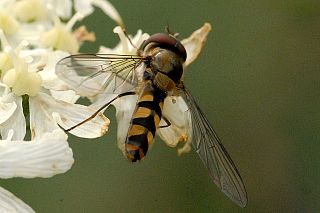
Meliscaeva auricollis is a West Palearctic species of hoverfly.

Xanthandrus comtus is a species of hoverfly. It is found in the Palearctic.
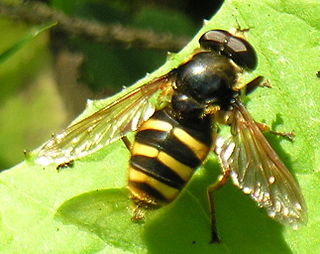
Sericomyia silentis, is a species of hoverfly. It is widespread throughout the Palearctic but normally encountered in small numbers in mountain regions and moorland and bog locations.
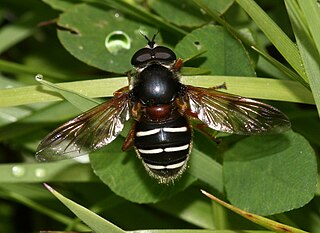
Sericomyia lappona, is a species of hoverfly. It is widespread throughout the Palearctic.

Melangyna cincta is a European species of hoverfly. This species has a muddled taxonomic history. Stubbs & Falk treat it as a member of the genus Melangyna. Other sources place it in Meligramma or Fagisyrphus.

Platycheirus rosarum is a species of hoverfly found in the Palearctic. Like its close relative Platycheirus granditarsus, it can be found in marshy meadows and ditches; indeed, the two species can often be found together. The flight time is between May and October, though it peaks in abundance in June and July.

Anasimyia lineata is a Palaearctic species of hoverfly.
Anasimyia transfuga is a Palearctic species of hoverfly.
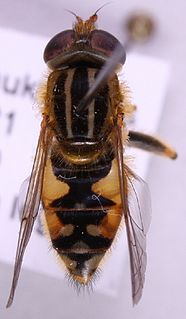
Parhelophilus consimilis is a Palearctic hoverfly.

Trichopsomyia flavitarsis is a European species of hoverfly.

Platycheirus ambiguus is a small widespread species of hoverfly found across the Palearctic from Ireland to Japan. A spring species found in flight in April and May, it visits spring-flowering trees and shrubs; e.g., Prunus spinosa in deciduous woodland and scrub.

Platycheirus angustatus is a species of hoverfly. It is found in many parts of the Palearctic, and in the Nearctic.
Melangyna arctica is a Holarctic species of hoverfly.

Didea alneti is a Holarctic species of hoverfly.
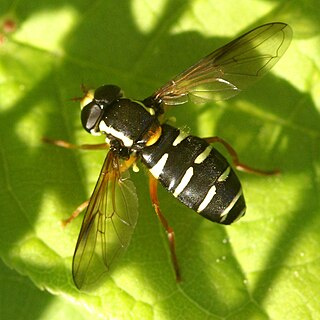
Xanthogramma citrofasciatum is a species of hoverfly found in grasslands from Ireland to western Siberia. The larvae live in ant Lasius colonies where they feed on the aphids tended by the ants.

Lejogaster tarsata is a Palearctic hoverfly


















